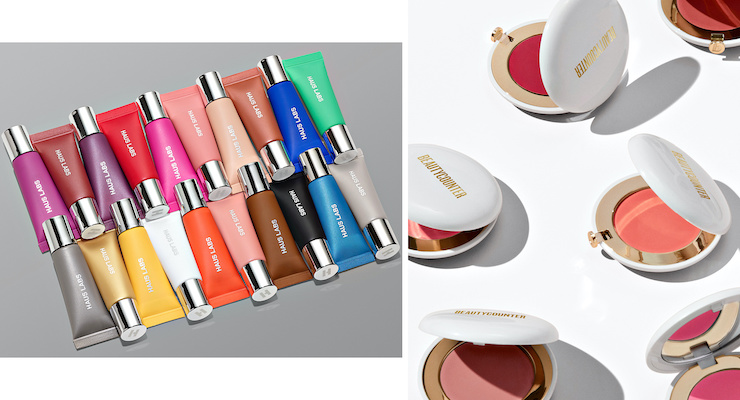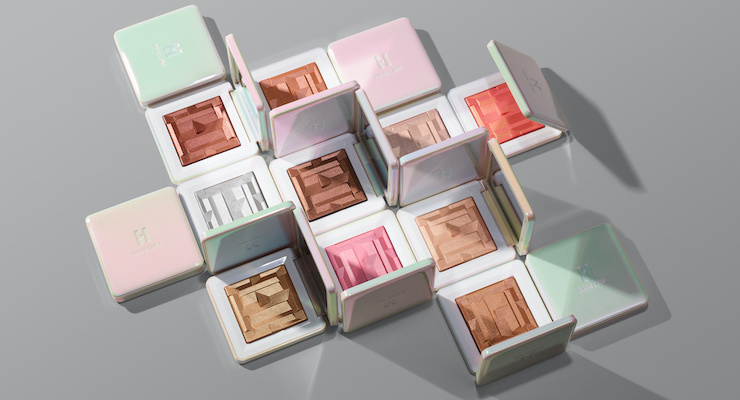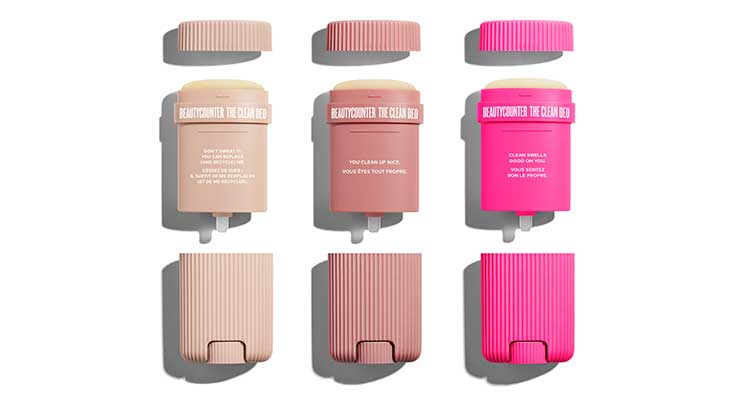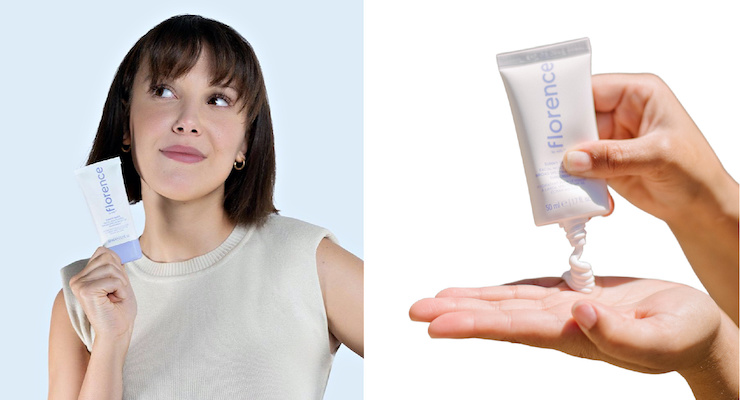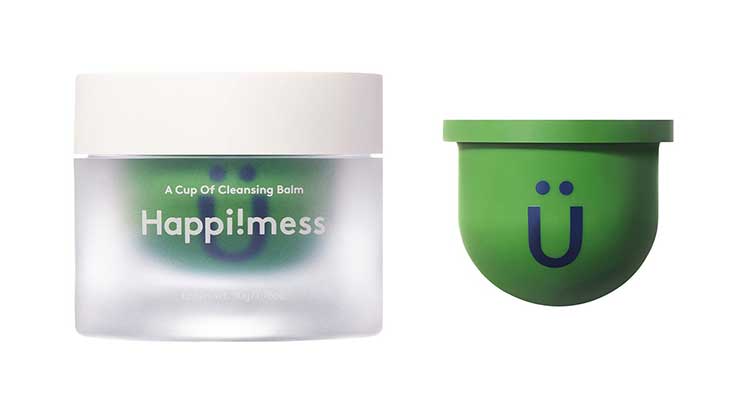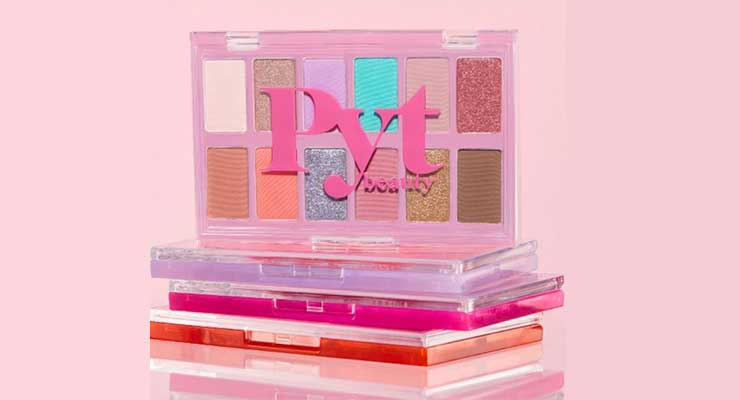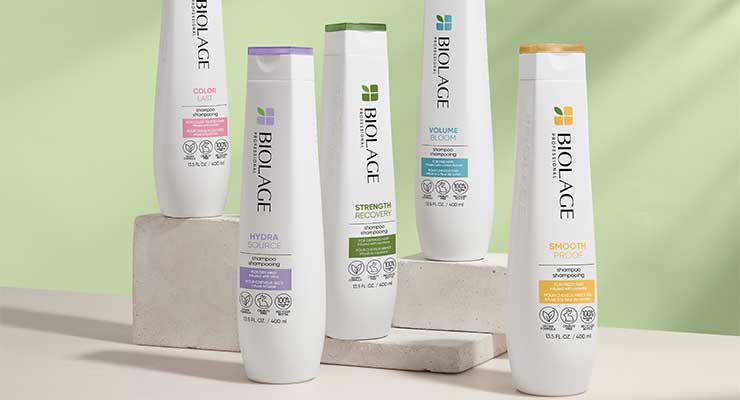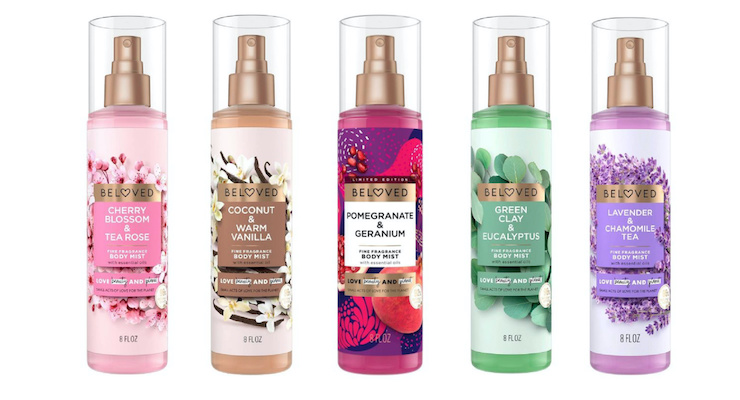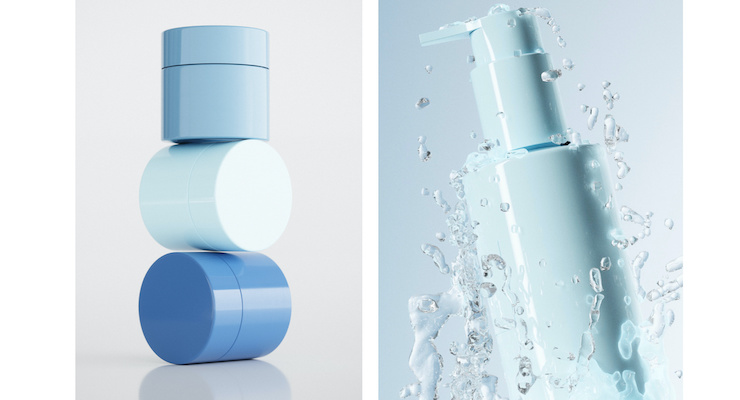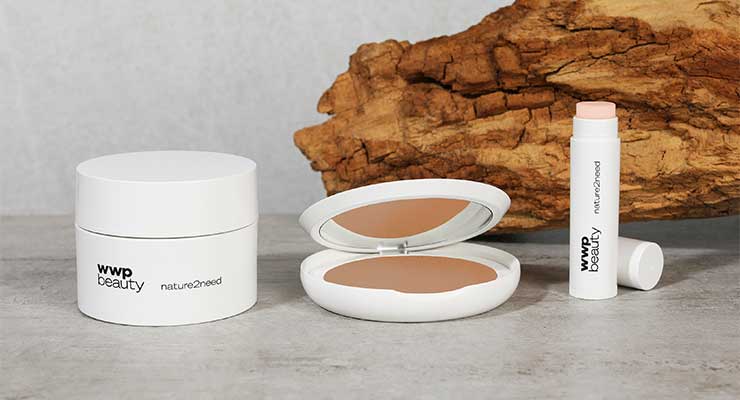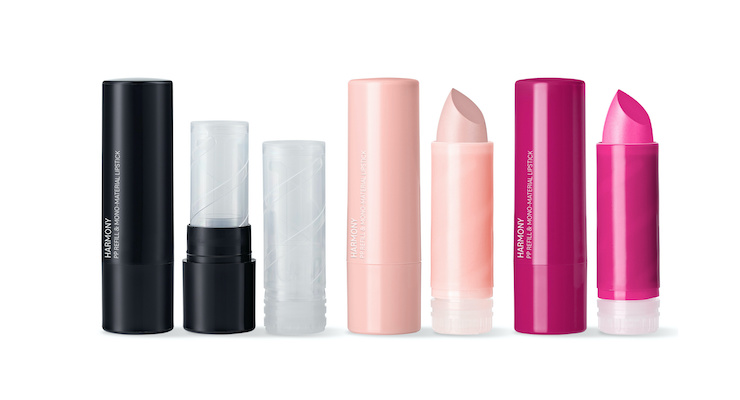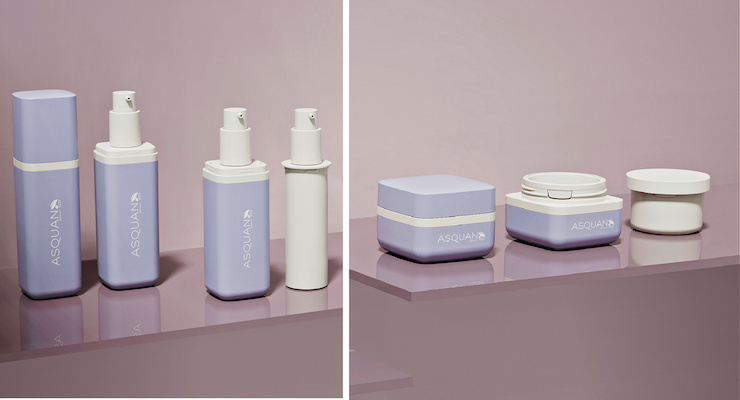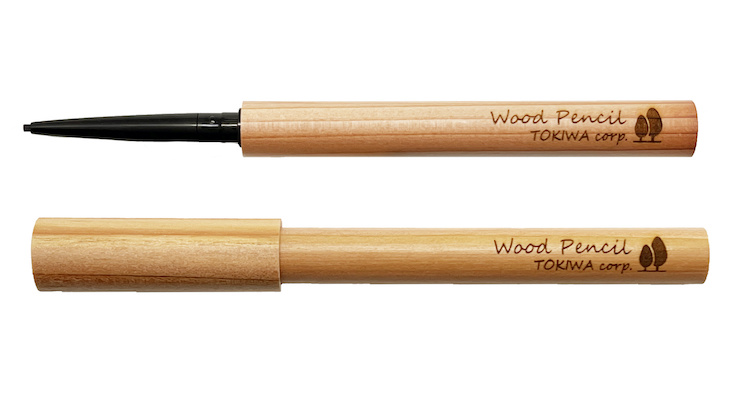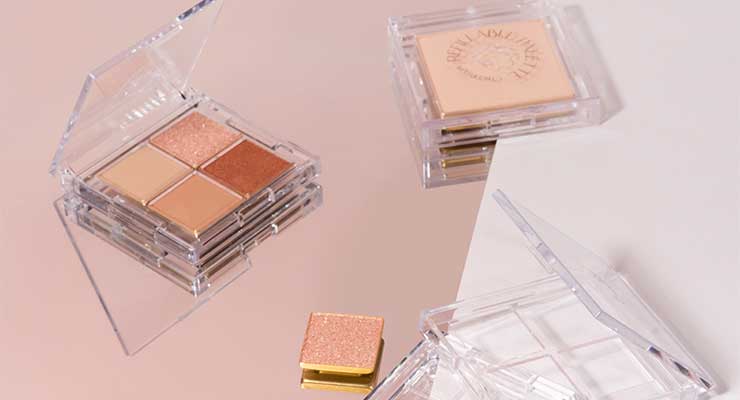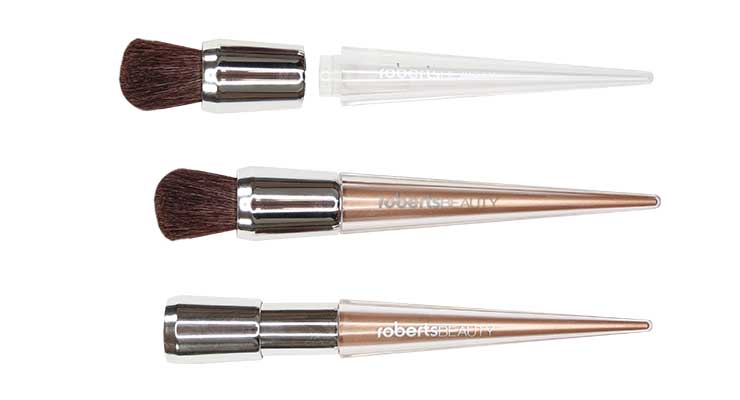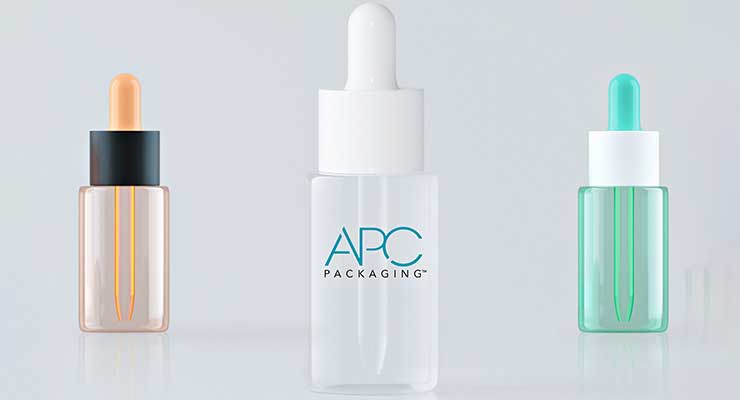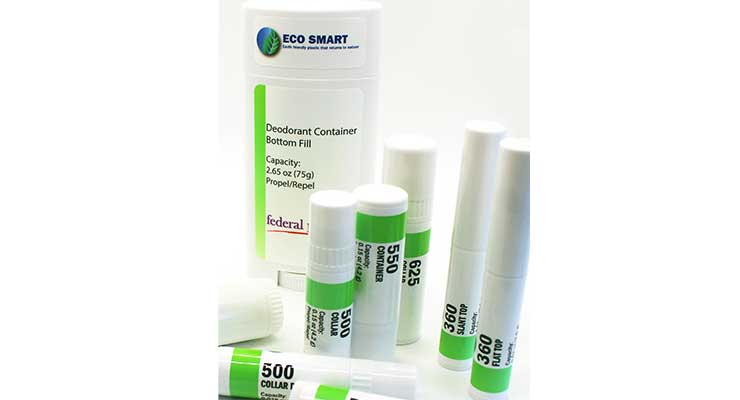Marie Redding, Senior Editor09.01.22
“Clean” is the new “natural,” according to Kline’s 2022 report, “Natural and Clean Beauty USA.” Marketers should swap the word “natural” for “clean,” the company advises, to resonate more strongly with beauty consumers demanding ingredient transparency. And sustainable packaging is no longer a choice—it’s a necessity for our planet.
“By the end of this year, the Ecobeauty score will be implemented by the biggest international cosmetic brands—and ‘clean beauty’ will become synonymous with transparency and virtue,” predicts Cécile Pompili, strategic marketing manager at Lumson. “We are making significant investments to achieve our objective, which is ‘to do good,’ ” she says. Lumson offers packaging solutions featuring designs driven by the lifecycle analysis tool ‘Spice,’ an eco-design tool to help drive sustainable packaging innovation.
Kline reported a 10% increase in the natural and clean beauty market in 2021. Last year’s supply chain issues caused product price increases that inhibited further growth, the company says. Skincare remained the leading category, while makeup rebounded strongly, but did not return to pre-pandemic levels, data shows.
Clean beauty brands are launching more product category extensions, according to Kline’s report, which mentions Kosas’ expansion from makeup to clean deodorants and bath and body products. “Clean-positioned deodorants continue to garner the interest of consumers looking to make the switch,” the report states, noting that the category grew by 32% in 2021.
Beautycounter, a leader in the clean makeup space, launched “The Clean Deo” deodorant last year in a refillable stick package. The brand is reducing water use, fossil fuel use, and greenhouse gas emissions by an estimated 47% by producing refills, the brand reports, as stated in a performance estimate by the EcoImpact-Compass for packaging. Beautycounter's plastic deodorant stick package, shown in the slider above, is a mono-material design that's easy to recycle. It features a striped texture inspired by a luxury fragrance’s faceted glass.
Beautycounter’s founder, Gregg Renfrew, was an early pioneer in the clean beauty space. Renfrew stepped down as the brand’s CEO earlier this year, but remains executive chair—and she is passionate about advocating to increase transparency in the beauty industry. “I started Beautycounter in 2010 with just a few products, and now we have put almost 50 million safer products into homes across North America,” she says.
Unilever expanded its clean and sustainable beauty brand, Love, Beauty and Planet, with its “Beloved” line of Fine Fragrance Body Mists. According to Kline’s report, the launch marked “the first year in which a leading company competed in all categories in the natural and clean beauty market.” The body mists come in 10 scents and are formulated without parabens or phthalates. The formula includes over 92% naturally-derived ingredients which are PETA certified. The bottles are made from 100% recycled plastic.
Requests Rise for Clean Formulas & Sustainable Packaging
Clean beauty and sustainable packaging are concepts that now have mainsteam appeal among consumers, and will continue to dominate the beauty conversation, suppliers say.“We expect clean beauty to become an industry standard in the near future,” says Jackie Paterno, vice president of CTK. “More than 90% of our current proposals are focused on fulfilling requests for both clean beauty and sustainable packaging solutions, which is an increase from last year,” she says.
Jennifer Raphael, general manager at Innovative Beauty Group North America (IBG), a division of Albéa, says “clean” is already standard, and is inspiring innovative formulations. “As beauty brands expand ‘banned’ ingredient lists, we continue to discover new alternative ingredients, while ensuring a formula remains efficacious,” she says.
Raphael also says more beauty brands are working to find ways to improve their packaging, to make it more eco-conscious. IBG recently worked with Jenna Lyons, former creative president and president of J.Crew who starred on the reality show, “Stylish with Jenna Lyons.” Lyons collaborated with makeup artist Troi Ollivierre to launch Loveseen, a brand of fake eyelashes.
“Jenna and her team had a very specific vision for the lash packaging, and the package development process required many months of redesigns, sampling, and strategic innovation,” says Raphael. “The packaging is 98% plastic-free, with the goal to move to 100%,” she says.
See also: Loveseen by Jenna Lyons is featured in—Chic & Sustainable Packaging for Fake Lashes.
Melissa Niebes, chief commercial officer at Federal Package, is seeing the same trends—and hearing the same types of requests from brands. “Just about every brand is embracing clean beauty in some way, whether it’s requesting formulas made with responsibly sourced ingredients, sustainable packaging, or both. Beauty consumers have become incredibly savvy about ingredients and sustainability, so as a supplier, it’s important to meet these demands in every facet of manufacturing.”
The team at HCT by kdc/one works with many beauty brands on turnkey and custom solutions. PYT Beauty worked with the supplier to develop custom formulas and packaging. “In addition to PYT’s ‘banned’ list, we had to comply with Target’s clean guidelines, which was a challenge,” says Nicole Amorosino, vice president of sales at HCT by kdc/one. PYT Beauty bans parabens, phthalates, sulfate, talc, PEG, petrolatum, silicone, and synthetic fragrances. The brand uses PCR for all its packaging.
PYT Beauty’s “Upcycle Eyeshadow Palette,” shown in the slider above, is a plastic palette made with 15% PCR. It can go into a recycling bin after the consumer pops out the pans, which fit through holes in the back. The brand fully explains to consumers how to do this on its website.
HCT by kdc/one also produces the brand's “So Extra Tinted Lip Balm” using 18% PCR for its stick package. PYT Beauty advises consumers to put the small, hard-to-recycle package into a closed water bottle before throwing it into a recycling bin. PYT Beauty is sold at Credo—and the retailer that is collecting all hard-to-recycle packaging through its in-store Pact Collective bins.
Lady Gaga’s Haus Labs Relaunches as 'Clean & Sustainable'
Beauty brands are paying lots of attention to retailers’ standards for “clean and sustainable" since shoppers are looking for brands with those labels or certifications. And as the number of beauty brands marked “Clean at Sephora” and “Conscious Beauty at Ulta” keeps growing, suppliers say more beauty brands are asking to make sure their formulas are in compliance with guidelines. as the number of beauty brands marked “Clean at Sephora” and “Conscious Beauty at Ulta” keeps growing.Lady Gaga’s Haus Labs relaunched as a "Certified Clean at Sephora" brand after reformulating and debuting its new “planet-conscious” packaging. The brand swapped black double-wall packages that looked excessive for a lighter, brighter look with colorful tubes, white compacts, and lots of shiny silver accents. Hy-Power Pigment Paint for eyes, lips, and cheeks, shown above, looks like an artist’s paint set, with colorful tubes.
Haus Labs eliminated more than 2,700 questionable ingredients in its formulas and prioritized sustainability before relaunching at Sephora. “Every single consumer touchpoint is new—from our strategy and brand DNA to our new visual brand language, including social and distribution points,” says Kelly Coller, chief marketing officer at Haus Labs. “Our goal is to showcase clean no-compromise color, rich product stories, inclusivity, and makeup artistry.”
More Brands Comply with Retailers’ Clean & Sustainable Guidelines
Florence by Mills, a clean beauty brand for Gen Z founded by actress Millie Bobbie Brown, star of “Stranger Things,” is part of the “Conscious Beauty at Ulta Beauty” program. Sunny Skies Facial Moisturizer Broad Spectrum SPF 30, shown, is a reef-safe zinc oxide sunscreen in a lightweight tube. It’s formulated without parabens, sulfates, SLS or silicones. Brand incubator Beach House Group developed the brand, which launched in 2019—and Brown owns a majority stake in her namesale brand.Beauty retailers are driving the development of cleaner formulations, suppliers say, due to increasing demands. “Beauty brands from mass to prestige are increasingly looking for cleaner formulations that are in line with retailers’ guidelines,” says Musa Dias, chief marketing officer at WWP Beauty. “Brands are also listening and responding to feedback from eco-conscious beauty consumers,” she says.
WWP Beauty offers a “Beauty with Purpose” service for brands looking for “mindful formulations, packaging, and accessories that are clean, sustainable, ethical, inclusive, and diverse,” the supplier states. The supplier provides brands with validated data for every package it develops, such as material reduction rates and GHG emissions, using its proprietary Eco-Analyzer tool.
NF Beauty Group’s Jane Yeon, full service business development manager, says beauty brands often ask for formulas that meet Sephora’s and Credo’s standards. “We continuously fulfill these requests, and many of our customers ask for natural ingredients,” she says. “We are also skilled in developing formulas with safe lab-made synthetics, which are often more sustainable than naturals, since they come from a lab and are not sourced from the environment,” she explains.
NF Beauty Group’s design manager Andrea Greff says the supplier’s stock packaging designs in PCR are often requested, as well as other eco-friendly materials. “These requests push us, and our vendors, to innovate the tooling process to make sure all packaging and materials can live a second life,” she says.
NF Beauty recently worked with InnBeauty Project, shown above, to ensure all its packaging contained a minimum of 30% PCR. InnBeauty Project is a "Clean at Sephora" brand, and NF Beauty produced—a bottle for its Down to Tone Resurfacing Toner; a bottle with a foaming pump for Foam Around AHA BHA Cleanser; and a tube for Next Level Daily Moisturizer. “InnBeauty also donates a percentage of revenue to plastic collection services,” says Greff.
Since every retailer and brand has different ‘blacklists’ of banned ingredients, formulating can get confusing.
“Some brands also give us ‘gray’ lists,” says HCT by kdc/one’s Amorosino. “These are ingredients that we can use in certain formulations, but only if including it will truly enhance a product’s performance,” she says. “In my opinion, ingredient trends are changing the way we work. Building our stock formula library has been a challenge, since each brand’s expectations and restrictons vary. And chemists now spend much more time developing custom formulations,” she explains.Jaelynn Burkamper, creative and innovation manager at Roberts Beauty, says the company’s “Clean Standard” is in line with many retailer guidelines, but continues to evolve. “Brands are looking for ways to meet retailer requirements—but they also need ways to connect with consumers and elevate a marketing story." she says.
"We strive to stay a step ahead of beauty trends to provide clean formulas with innovative and unique natural ingredients. We can use fruits and vegetables specific to different cultures or regions, for example, such as incorporating avocado, mushroom, or pomelo into a formulation,” she explains.
Burkamper says Roberts Beauty develops formulas that are ready to use, but can be modified to fit a brand’s needs. The supplier also has a sustainable packaging collection, available as stock designs.
Many of Seacliff Beauty’s customers request formulas that comply with ‘Sephora Clean’ guidelines, according to Amanda Deak, senior marketing manager. “More retailers have now set stricter standards for sustainable packaging as well, in addition to clean ingredients,” she says. The supplier provides full-service turnkey solutions for beauty brands, specializing in makeup, skincare and haircare.
Beauty Brands Expand Sustainability Initiatives
Kline’s recent market report highlights the trend toward greater ingredient transparency, and says many brands are setting new sustainable packaging goals. “Sustainability reigns supreme,” Kline states, “with brands continuing to level up their initiatives, particularly in haircare.”Biolage Professional, a L’Oréal Professional Products Division brand, recently relaunched its haircare line with vegan formulas that now carry a Leaping Bunny certification from Cruelty Free International. New signature bottles are made from 100% PCR plastic, and will save over 30 tons of virgin plastic each year. L’Oréal also announced its U.S. facilities will become carbon-neutral.
Aurelie Croze, assistant vice president of Biolage Professional, says, “We’ve been working tirelessly to revamp our brand’s look and feel and to meet consumers needs in wanting vegan, cruelty-free and sustainable beauty products.” According to GlobalData, 35% of consumers actively look for cruelty-free claims on beauty products.
Other brands that have made changes include The Body Shop, which relaunched its body butters in 100% recyclable packaging with aluminum lids. Also, Burt’s Bees launched its first reusable product with Loop, and Youth to the People announced its “zero-waste” pledge to create packaging with recycled components.
Rising Requests for Refillable Packaging
The rising demand for sustainable packaging means suppliers are flooded with requests from beauty brands— and refillable packaging is especially popular. “Right now, 85% of our proposals have a sustainable offering, and our goal by 2023 is to have 100%,” says Innovative Beauty Group’s Raphael.Innovative Beauty Group offers a customizable refillable palette that can be made without plastic. “We are seeing several requests for our refillable palettes, which we can produce in any shape for a custom look,” says Raphael. Requests for solid formats, such as waterless products, are also increasing, because they take up less volume during shipping, which helps to lower CO2 emissions,” she says.
CTK developed a Refillable Palette in a single well and 4-well design. “No glue is needed to assemble the pans with our snap-in system,” says Paterno. “It’s a mono-material design, in PET, which can be run in PCR resin. It’s ideal for pressed powder products, such as eyeshadows, highlighters, blush, bronzer, and face powders,” she says. “This year, most of our new packaging options are mono-material or refillables, and PCR is most often requested,” she adds.
NF Beauty Group’s Yeon says the “keepsake aspect” of a refillable package makes it ideal for luxury brands. “We can decorate using luxurious finishes to incentivize the consumer to continue replacing the formula with refills,” she says. The supplier also offers a Paper Tube package for beauty brands aiming to eliminate or decrease plastic use.
HCP’s Harmony PP Refill Lipstick is another refillable packaging option. The package can hold a lipstick or other types of cosmetics, such as concealer. “It is both refillable and ready for single-stream recycling, and it has a full-size mechanism that can be recharged many times. We can also add a weight to the base to enhance its feel,” says Linna Wang, CSR & sustainability manager at HCP Packaging.
The mono-material design is PP, and the fashion parts can be made in 50% PCR. “For brands investing in custom packaging, we can custom-design the fashion parts to use with the refill mechanism. We can design, engineer, and tool these parts to create an eye-catching look for a brand,” says Wang. The supplier offers extensive decoration capabilities to fit any aesthetic.
Indie brand “HappiMess” uses HCP’s sustainably-designed stock Echo 50ml Refill Jar for its cleansing balm. “The durable outer package is designed to reuse as the consumer refills the inner pod,” says Wang. “The consumer can easily separate the PET jar from the PP pod refill, and recycle both parts,” she explains.
Lumson offers refillable packaging solutions, and many are made with PCR, including its airless refillable bottles and jars. “Our airless solutions help preserve ingredients while reducing waste,” says Pompili. Lumson’s airless packages have an eco-lock system, which allows the consumer to easily separate the pump components for recycling. Lumson also offers PCR glass, fully recyclable lipstick packaging in PCR PP, and provides eco-friendly decorating.
Asquan’s stylish mono-material refillable Soft Square Collection is designed as a “modern take on a river stone.” The packages in the collection feature rounded corners with soft curves, and no sharp corners. The line includes a 50ml airless bottle and jar, and can be made in PCR. “PCR is one of our most popular requests,” says Marina Henkelmann, sales manager at Asquan. All parts are PP, including the metal-free pump assembly, so the packaging is fully recyclable.
Beauty brands are requesting mono-material packaging frequently, according to Eric Goyer, director of commercial sales at Asquan. “Mono-material packaging makes it easier for consumers to recycle,” he says. “Beauty brands are also interested in our refillable stick packaging in PP or PET,” he adds.
Roberts Beauty offers a new refillable EcoFlow Brush—a flow-through powder brush with a built-in patented protective sleeve. “It has a valve that turns on and off to control product flow and prevent waste. When it’s closed, it can be used as a standard brush with other products,” explains Burkamper. A brand can customize the brush handle, size, shape, and bristles to apply all types of products, such as face makeup, face powders with SPF, or body products. “We also adapted the design to create an eyeshadow size,” she says.
Boscia chose Roberts Beauty’s refillable Flat Spout Pour Cap package for its Probiotic Exfoliating Powder. “The refillable bottle is molded in 30% PCR,” says Burkamper.
Suppliers Offer Pencils, Droppers & More
Beauty brands’ need for more sustainable packaging options continues to inspire innovation. Tokiwa Cosmetics International launched a collection of wood makeup pencils, including the brow pencil, shown. The company says it is the first-ever refillable pencil collection to combine bio-based cartridges with FSC-certified wood pencils and caps. The supplier offers different types of wood for the caps and barrels, plus lead pencil shapes.The refillable cartridges are PCR plastic, and are fully customizable. “It’s a sustainable and airtight package, ideal for clean formulas,” says Dana DiSomma, director of sales and business development at Tokiwa Cosmetics International. The supplier also offers a variety of clean and vegan formulas, along with many types of sustainable and refillable packages, such as stick designs.
APC offers a Mono-Material System Dropper & Bottle. “It is designed to ensure a beautiful user experience that also has a positive impact on the environment, since it can be recycled as one unit,” says Erin Gallagher, director of marketing at APC. It is is available as a stock package, which combines a 30ml PP bottle with a 20/410 dropper. “We designed the pipette using the latest technology for clarity, which rivals the clarity of glass. It is also chemical-resistant,” says Gallagher. “The pipette and bottle are both PP enhanced with ‘NX UltraClear’ to challenge the traditional clarity of glass,” she explains.
APC offers brands customizable options, such as bulbs and collars in various colors, and transparent tints on pipettes. “We have several projects in the works with global skincare brands that are using this package for upcoming launches,” Gallagher adds.
New Materials for Beauty Packaging
Beauty packaging suppliers are making strides in material innovations, and many are focusing on biodegradable plastics. “More brands are looking to move beyond PCR, and we’re anticipating a move toward bio-based materials as a replacement for standard plastics,” says HCP’s Wang.HCP’s exclusive material innovation, “EcoWood” is a fossil-free, bio-based material made from 100% renewable sources. It is recyclable alongside PP and PE streams. “EcoWood’s carbon footprint is neutral to negative over the cradle-to-gate cycle. It is industrialized to run in conventional injection molding and extrusion blow-molding tooling,” explains Wang. HCP also offers brands “EcoFlexi,” a bio-based material innovation for molded flexible mascara applicators that offers the same high-performance application as plastic.
CTK expects to soon commercialize its biodegradable and compostable plastic pellets, in partnership with its subsidiary CTK Bio Canada. It’s an alternative to PLA. “PLA is the most widely used biodegradable plastic, but it can only decompose under high temperature and humidity. It must be collected separately and treated in a specialized composting facility,” Paterno says. “Our biodegradable plastic is made from agricultural waste, and can be decomposed by microorganisms in a landfill. It can replace PE, PP, PS and ABS,” she says.
Federal Package offers a similar solution through its ‘Eco Smart’ Platform. “Our proprietary technology enables plastic components to degrade in biologically active environments,” says Niebes. “A brand can color, customize and decorate their product line without creating long-term waste or microplastics that end up in our oceans,” she says. The supplier’s propel/repel stick packages are a part of its ‘Eco Smart’ offerings, and they’re ideal for deodorant, sunscreen sticks, lip balms and lotions.
WWP Beauty offers its exclusive “Nature2Need” collection, a line of plastic-free biopolymer packaging made from sugarcane. “The material creates a luxurious, heavy-weighted cosmetic package with a satin finish,” says Dias. It’s suitable for refillable products—and can be a replacement for ABS and polycarbonate components, such as caps and vials.
WWP’s Nature2Need biopolymer material will biodegrade by 90% in industrial composting conditions, the supplier says. “That’s ten times faster than PP, without releasing micro-plastics,” says Dias. “Plus, sugarcane is renewable, abundant and capable of storing CO2, to help reduce levels in our atmosphere,” she says.
WWP Beauty can customize the material using up to 10% natural bamboo and coconut fibers, or biomass waste consisting of rice, wheat, and coffee husk to create a natural look and feel. “A brand can also infuse the material with scented oils for a unique sensory experience,” says Dias.
Ocean-bound plastic is another trending material, and Seacliff Beauty offers packaging made from “#tide Ocean Material,” through its partnership with the company. “We have had an outpouring of interest in this material since we showed it at the recent Luxe
Pack New York and Cosmoprof Las Vegas shows,” says Deak. “Our exclusive partnership with ‘#tide’ allows us to close the loop when it comes to sustainable packaging. Brands and consumers can see the full lifecycle of the material, from collection to finished good, using ‘#tide’s Material Passport,’” she says.
Seacliff Beauty offers packaging made using up to 100% ocean-bound plastic in custom colors. Decorating options for the material are similar to PCR. “It is food-grade, FDA-certified and REACH compliant,” says Deak.
Roberts offers an Oceanworks packaging collection made from ocean-bound plastic. “It’s collected from beaches and transformed into recyclable cosmetic packaging solutions,” says Burkamper. The collection includes Roberts Oceanworks Lipstick package, which can house any stick product. It is molded using Oceanworks PP.
Another option is Roberts’ mono-material Vanity Palette, made from 100% Oceanworks resin. “We can customize this collection by color-matching to any shade. We can also source Oceanworks material by region, allowing a brand to trace its material collection location. This provides a brand with a compelling marketing story and gives consumers full transparency,” says Burkamper.
What’s Next?
Suppliers say more innovation lies ahead, especially since it’s a critical time for our environment—and planet.HCP’s Wang says due to increasing regulations, the use of PCR is becoming standard—but recycling infrastructures must improve to better support a circular economy. “New legislations on plastic recycling and emission reduction targets are driving an ‘uprise’ of chemical recycling. There’s an increasing number of chemical recycling centers under construction that will help recycle “hard to recycle” plastics, she explains. The supplier is certified globally in manufacturing components made from chemically recycled materials.
Innovative Beauty Group’s Raphael says the company looks forward to paving new paths. She says, “We believe in growth and constant evolution. We’re continuously researching to offer the most sustainable materials and formulations to execute a brand’s vision, but as we head down this road, we’re realizing that sustainability is about both corporate and human change.”
Raphael adds, “Every time we meet with a beauty brand, we present options that are for the ‘greater good’ and this is a part of our mandate going forward. We’re thrilled it has become a top priority.”
CTK’s Paterno says they will continue to promote the benefits of biodegradable plastic, and hope to see it on the market for cosmetics by early next year. “We are confident that with these efforts we can help heal the beauty packaging industry—and try to reverse the environmental damage caused by years of irresponsible plastic usage,” she says.
WWP’s Dias describes what the future might hold, saying, “Sustainability trends will progress towards ‘ocean SOS’ solutions’ due to the devastating effects of microplastic contamination. We will keep developing biodegradable packaging, with a focus on designing for disassembly.”
Roberts Beauty’s Burkamper comments, “Sustainability is a journey. We will keep helping beauty brands make informed decisions, in every step of the product development and packaging processes.”
HCT by kdc/one’s Amorosino predicts, “All beauty brands will soon make more decisions regarding clean beauty and sustainable packaging and incorporate these in some way—whether it’s using mono-material plastics, PCR, refillable vessels, or bio-based materials.”
As a final thought, Amorosino says, “I believe the beauty industry will continue to evolve in many innovative ways.”

